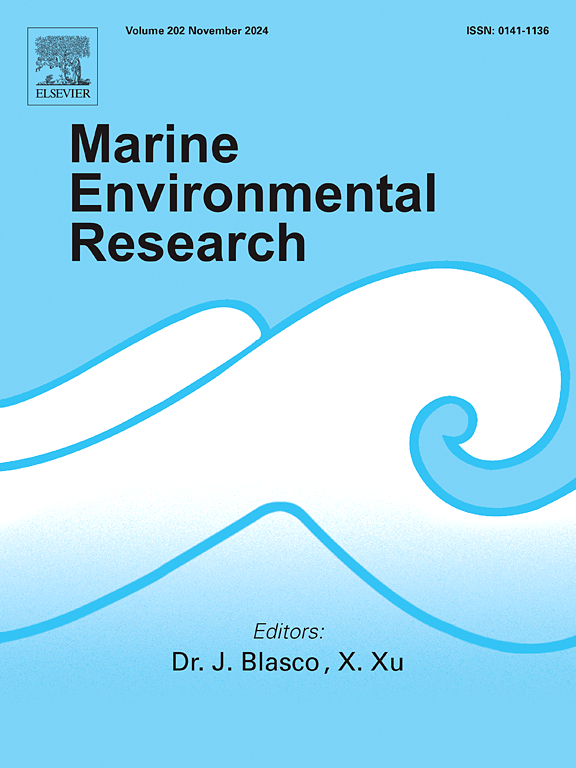Geomorphological drivers of benthic community distribution on high energy temperate mesophotic and rariphotic reefs
IF 3
3区 环境科学与生态学
Q2 ENVIRONMENTAL SCIENCES
引用次数: 0
Abstract
Current knowledge of mesophotic benthic reef communities has predominantly focused on the distribution of sessile assemblages along the depth gradient. However, the influence of geomorphology on exposure to hydrodynamic processes may independently shape community assemblages, in addition to depth. We examined the distribution of sessile invertebrates at 50–150 m depths on exposed continental shelf reefs within a Marine Park in southwest Tasmania. Using marine still imagery and bathymetric mapping derivatives, we described the spatial response of biota to the prevailing hydrodynamic regime and geomorphology in this region, based on the growth forms of dominant morphospecies. The biota is exposed to large oceanic swells where high-wave energy mobilises sediments at depths of up to 140 m. As expected, the encrusting sponge morphospecies group was most prevalent but showed a niche habitat preference. Unlike wave-exposed reefs elsewhere, we observed a high cover of dominant morphospecies with three-dimensional growth forms alongside encrusting sponges over a wide range of depths. Notably, whip octocorals, cup-like, and tube sponge morphospecies groups had high cover on the most exposed slopes, while other groups such as encrusting and simple massive sponges were absent. However, this baseline assessment suggests there may be high species turnover due to the severe conditions during ocean storms, which may influence population dynamics. We recommend conducting future monitoring at ecologically relevant intervals to assess the natural variability in distribution due to local habitat effects.

求助全文
约1分钟内获得全文
求助全文
来源期刊

Marine environmental research
环境科学-毒理学
CiteScore
5.90
自引率
3.00%
发文量
217
审稿时长
46 days
期刊介绍:
Marine Environmental Research publishes original research papers on chemical, physical, and biological interactions in the oceans and coastal waters. The journal serves as a forum for new information on biology, chemistry, and toxicology and syntheses that advance understanding of marine environmental processes.
Submission of multidisciplinary studies is encouraged. Studies that utilize experimental approaches to clarify the roles of anthropogenic and natural causes of changes in marine ecosystems are especially welcome, as are those studies that represent new developments of a theoretical or conceptual aspect of marine science. All papers published in this journal are reviewed by qualified peers prior to acceptance and publication. Examples of topics considered to be appropriate for the journal include, but are not limited to, the following:
– The extent, persistence, and consequences of change and the recovery from such change in natural marine systems
– The biochemical, physiological, and ecological consequences of contaminants to marine organisms and ecosystems
– The biogeochemistry of naturally occurring and anthropogenic substances
– Models that describe and predict the above processes
– Monitoring studies, to the extent that their results provide new information on functional processes
– Methodological papers describing improved quantitative techniques for the marine sciences.
 求助内容:
求助内容: 应助结果提醒方式:
应助结果提醒方式:


